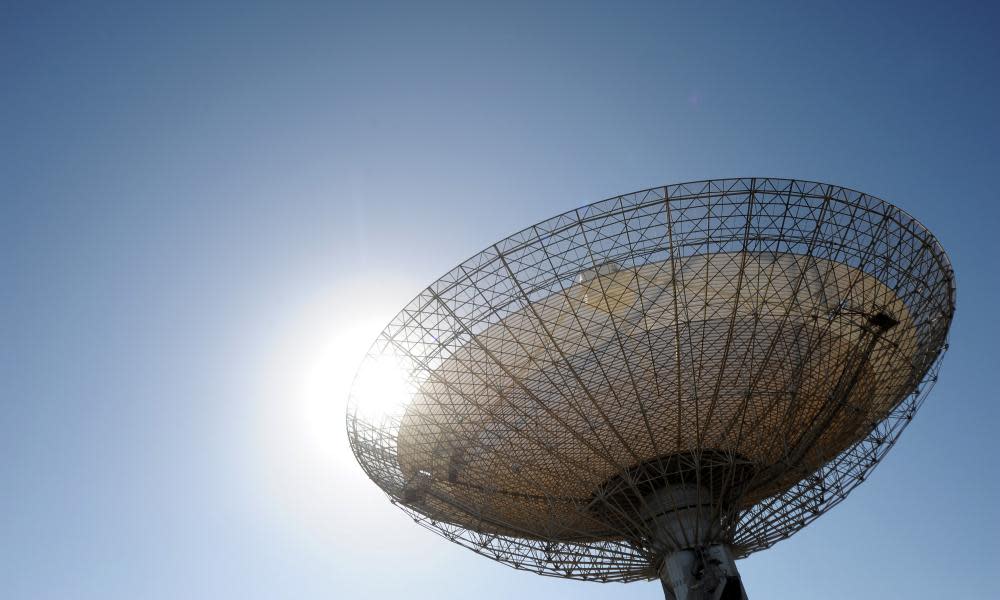It's exciting that Australia is getting a space agency. But what will it do? | Andrew P Street

On Monday Australia woke to learn that it would be getting its own national space agency. Delivering the keynote speech at the International Astronomical Congress in Adelaide, Michaelia Cash said the agency is already at work on a charter, the details of which will be released in March 2018.
And we should be excited, because Australia already does amazing space science.
For one thing, we have the largest radio telescope in the southern hemisphere – the 70m Deep Space Station 43, which was the final telescope to pick up the signal from the Cassini probe as it hurtled into the atmosphere of Saturn earlier this month. It’s part of the Canberra Deep Space Communications Centre in Tidbinbilla, which is a vital part of Nasa’s communication with its various space probes, orbiters and rovers.
And, of course, there’s the Parkes radio telescope (you know, the one from The Dish), the Australia Telescope National Facility near Narrabri, the crowdfunded facility at Mopra near Coonabarabran, and the Australian Square Kilometre Array Pathfinder in the desert near Boolardy in Western Australia (powered by the same sort of solar-plus-lithium-ion-battery set up that Elon Musk is potentially bringing to South Australia, incidentally).
Now, those projects are all run under the auspices of the CSIRO and would presumably not be shunted over to a new agency – but currently they’re the only game in town for our nation’s best and brightest physicists, astronomers and engineers. A new space agency would do much to stop us losing fine intellects to other countries in the OECD that have space agencies – which is currently all of them except for Australia and Iceland.
And there are a lot of as-yet unanswered questions about how the national agency will work, with the likes of the Australian National University (who run the Mount Stromlo observatory) and the CSIRO already sending out press releases congratulating the government on the decision and casually mentioning how they’re peak bodies in the space sector with a rich history of acting as advisory and coordination bodies in the science biz.
But the first question of the Australian Space Agency would appear to be this: what’s it actually going to do? Oddly enough, that’s not nearly as clear as you’d expect.
We know a few things it’s not going to do. Send people to the Moon is one, as education minister Simon Birmingham pointed out. And that’s a hint as to why the details are currently a bit spare: the work of the Australian Space Agency is likely to be a bit, well, unsexy.
That’s not to say it’ll be unnecessary, mind. For example: say you’d like to launch a satellite to track Australia’s weather patterns, or water table. Who would you ask about such a thing?
Great question, because currently there’s no answer.
That’s in part because Australia doesn’t launch its own satellites: our first ever communications satellite was launched from Woomera in central South Australia in 1967, but since then we’ve either got Nasa space shuttles to launch them in orbit (as with Aussat 1 and 2 in the 80s), launched them from other countries (the NBN’s Sky Muster satellites were launched from French Guiana in 2015 and 2016), or just to wait until other nations do it, then we ask if we can see the data. A centralised agency will make such things less complicated.
And while the government have been quick to point out the impetus behind this decision is both scientific and commercial, while touting the rise in private space companies that will be clamouring to use our facilities, it’s worth noting that the two biggest clients in the initial term will be telecommunications companies and the defence industry. So to an extent this will be about keeping up with other countries, and also about not paying other nations to do our sensitive surveillance work for us.
Right now it appears that the agency will be based in South Australia and the ACT (and possibly the Northern Territory – which would make sense for reasons we’ll come to in a bit). But while Woomera was the site of the one and only domestic satellite launch, the festival state probably won’t end up being home to a large-scale launch facility – assuming Australia even bothers with one – because as the name suggests, South Australia is located pretty strongly south.
It’d be possible to do smaller payload launches from SA (as New Zealand recently did) which might work for networked low-weight, low-cost miniature satellites, or “cubesats”. But if this agency is thinking long term, with a proper commercial spaceport to service the International Space Station or any future facility, it’ll need to move north.
Ideally a launch site needs to be as close to the equator as possible, to capitalise on Earth’s faster spin and thereby reduce the amount of fuel required for getting off the ground. That’s why Nasa launches from sunny Florida rather than chilly Minnesota. It’s just barely possible to imagine that one day we could have a proud facility in far north Queensland or outside of Darwin.
That’s a multi-billion dollar investment, though, so you’d need to be pretty damn confident there was both the demand for such a service and such a level of reliability and safety to warrant building in largely protected ecosystems.
Still, could our somewhat opaque Northern Australia Infrastructure Facility be turned to such a task? Seems like a better use of public money than a coal train to nowhere, certainly.

 Yahoo News
Yahoo News 
